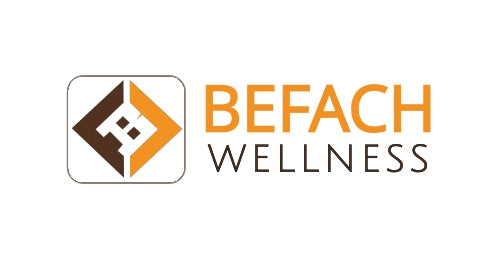
GI 101: Why It Matters & How Befach Helps
Share
The Glycemic Index (GI) ranks carbohydrate foods by how quickly they raise your blood sugar. Low‑GI foods provide steadier energy, better satiety, and can support long‑term metabolic health. At Befach, we bring science and supply‑chain discipline together to offer rice options that help keep GI lower—without sacrificing taste.
What Is GI—and Why Should You Care?
GI is scored from 0 to 100. The higher the score, the faster the food raises blood glucose. Choosing lower‑GI foods helps:
- Reduce post‑meal blood sugar spikes
- Improve satiety and portion control
- Support weight and metabolic health
- Provide more consistent, long‑lasting energy
For guidelines and consumer awareness, see FSSAI resources and nutrition advisories by ICMR and NIN.
Befach Rice: The Science Behind Lower GI
- Higher amylose selection – Amylose digests more slowly than amylopectin, which can help lower GI.
- Minimal polishing – Preserves fiber and micronutrients that support a gentler glucose response.
- Steam/parboiling – Helps stabilize starch structure and can reduce rapid starch breakdown.
- Fortification (where applicable) – Adds iron, folic acid, and B12 without elevating GI.
Home Tips to Keep Your Rice Meals Lower‑GI
- Cook‑cool‑reheat: Chill cooked rice for 8–12 hours, then reheat. Cooling promotes resistant starch via retrogradation.
- Pair smartly: Add protein (dal, eggs, paneer, chicken) and healthy fats (ghee, nuts) to lower the overall meal GI.
- Mind doneness: Avoid overcooking; intact grains digest more slowly.
- Portion awareness: A lower‑GI meal still needs sensible portions.
Who Benefits Most from Low‑GI Choices?
- Families seeking steady energy and balanced meals
- People managing blood sugar or metabolic health
- Athletes and professionals who need stable performance energy
- Anyone pursuing long‑term wellness and satiety
Compliance, Safety, and Trust
Befach aligns with Indian regulations and transparent trade practices:
- FSSAI – Food safety standards and labeling
- ICEGATE Customs and CBIC – Import filing, duties, and clearance (for imported lots)
- Customs clearance and logistics handled by experts
How Befach Helps—End to End
- Sourcing high‑amylose, quality rice varieties
- Logistics with visibility, insurance, and temperature‑aware handling
- Customs clearance and regulatory compliance
- Consultation for families, retailers, and distributors
FAQs
Is all brown rice low GI?
Not necessarily. Variety, processing, and cooking method matter. Some parboiled white rice can test lower GI than certain brown rice types.
Does reheating destroy resistant starch?
No. Once formed during cooling, much of the resistant starch remains after gentle reheating.
Can kids and seniors eat lower‑GI rice?
Yes—adjust texture and portion to individual needs; consult your clinician for medical conditions.
Quick Summary
GI matters because it affects energy, satiety, and metabolic health. Befach supports lower‑GI eating through smarter varietal selection, minimal polishing, and steam/parboiling—paired with FSSAI‑aligned quality, dependable logistics, and seamless customs clearance. Explore our sourcing options or book a consultation.
